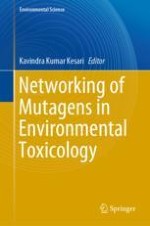2019 | OriginalPaper | Buchkapitel
Elucidation of Scavenging Properties of Nanoparticles in the Prevention of Carcinogenicity Induced by Cigarette Smoke Carcinogens: An In Silico Study
verfasst von : Qazi Mohammad Sajid Jamal, Ali H. Alharbi, Mohtashim Lohani, Mughees Uddin Siddiqui, Varish Ahmad, Anupam Dhasmana, Mohammad Azam Ansari, Mohd. Haris Siddiqui, Kavindra Kumar Kesari
Erschienen in: Networking of Mutagens in Environmental Toxicology
Aktivieren Sie unsere intelligente Suche, um passende Fachinhalte oder Patente zu finden.
Wählen Sie Textabschnitte aus um mit Künstlicher Intelligenz passenden Patente zu finden. powered by
Markieren Sie Textabschnitte, um KI-gestützt weitere passende Inhalte zu finden. powered by
